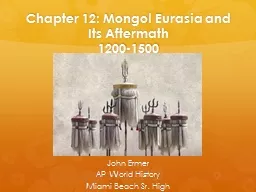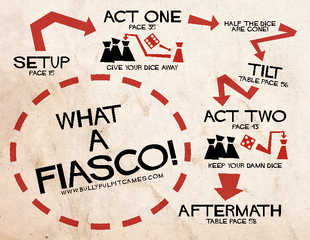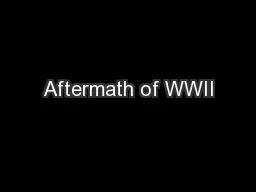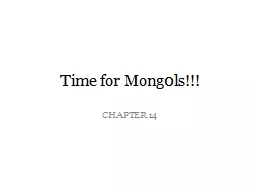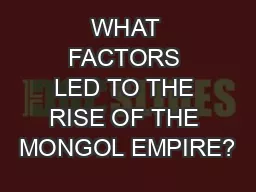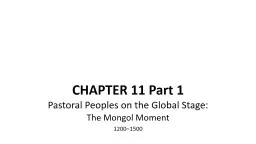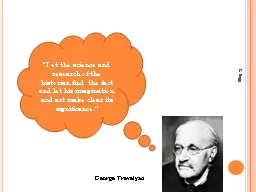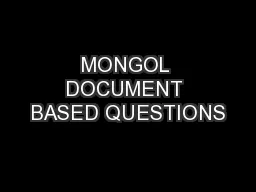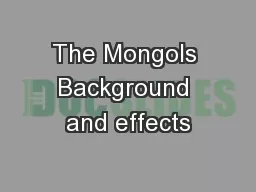PPT-Chapter 12: Mongol Eurasia and Its Aftermath
Author : luanne-stotts | Published Date : 2018-11-07
12001500 John Ermer AP World History Miami Beach Sr High Happening Now Americas 1325 Aztecs found Tenochtitlan 14381533 Inca Empire Europe 1215 Magna Carta signed
Presentation Embed Code
Download Presentation
Download Presentation The PPT/PDF document "Chapter 12: Mongol Eurasia and Its After..." is the property of its rightful owner. Permission is granted to download and print the materials on this website for personal, non-commercial use only, and to display it on your personal computer provided you do not modify the materials and that you retain all copyright notices contained in the materials. By downloading content from our website, you accept the terms of this agreement.
Chapter 12: Mongol Eurasia and Its Aftermath: Transcript
Download Rules Of Document
"Chapter 12: Mongol Eurasia and Its Aftermath"The content belongs to its owner. You may download and print it for personal use, without modification, and keep all copyright notices. By downloading, you agree to these terms.
Related Documents

